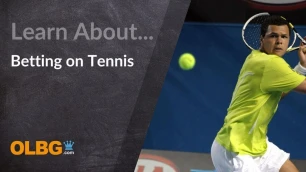
Your data guide to football betting, Dan Tracey shows you where the numbers point before the market catches up.
Intro
In theory, tennis betting, at its most straightforward premise, is one of the easiest bet you can make with online bookmakers.. You bet on one of two players to win, and you are either correct or incorrect in your decision, depending on who you choose and who comes out on top.
Sounds easy in practice, and because it is so easy, the odds can often be heavily skewed towards the favourite. For example, if Rafael Nadal were to go up against Dan Evans on Clay at Roland Garros, the Spaniard odds would be incredibly short in terms of victory.
Can we bet on Tennis Favourites Reliably?
Logically, you would opt for Nadal to win in Paris, and although that logic is likely to be proved correct more often than not, it is one that is going to return a great deal of profit on top of your initial stake being returned.
Therefore, picking the winner may be easy within the confines of the tennis court, but how easy is it to be profitable in the long term?
To answer this question, I have once again dug deep into the data in a bid to find out and by taking a sample of Men’s ATP Tour results for 2023 and the attached betting odds, here is what we found.

The Ultimate Guide to Tennis Betting Sites in the UK
WINNER OR LOSER
Within the sample of Men’s ATP Tour results for 2023, a total of 2703 matches took place and the first thing to look for is how often the favourite won across the sample:
| STATUS | FREQUENCY | PERCENTAGE |
|---|---|---|
| WINNER | 1779 | 65.82% |
| LOSER | 924 | 34.18% |
| COUNT | 2703 | 100.00% |
As we can see, it is good news for the favourite in the purest sense of living up to expectations. Of those 2,703 matches, 1,779 saw the favourite win. In percentage terms, this equates to 65.82% - almost two thirds of the overall sample.
While in terms of going against the form guide, there were 924 upsets within the sample – 34.18%. Therefore, we know that across the space of a year, nearly two-thirds of the favourites come out on top in the ATP Men’s Tour.
The big question is whether those 1,779 winners would generate a profit or not.
PROFIT OR NO PROFIT
The way we are going to measure this and answer the question, is by applying flat £1 stakes to each of these matches. Each of the 2,703 sees the favourite backed at £1 and when doing so, the overall return was as follows:
| STATUS | P/L |
|---|---|
| STAKE | 2703.00 |
| WINNINGS | 2467.55 |
| PROFIT/LOSS | -235.45 |
As you can see, an outlay of £2,703 would only return £2,467.55 by comparison – meaning an overall loss of £235.45. Not a good starting point for those looking to make blanket bets within the world of men’s tennis.
However, there is an element of logic that needs to be applied and it is one that comes in the shape of value or the lack thereof. For example, if Novak Djokovic is priced at 1.01 to get the better of Pedro Cachin, in non-blanket terms that is not an appealing bet.
With this in mind, we also decided to apply a filter to our data sample. The same blanket stakes of £1 each but the favourite odds have to be higher than 1.50. When we add this filter, here is what we found:
| STATUS | P/L |
|---|---|
| STAKE | 1201.00 |
| WINNINGS | 1026.00 |
| PROFIT/LOSS | -175.00 |
This time around, the overall stake has been reduced to £1,201 but the total winnings have only seen £1,026 recouped in return. This means even with a filter of minimum favourite odds applied, the overall loss is still £175.
Then again, there could be a way to generate profit by changing the unit stake depending on the odds of the favourite. If we left all favourites priced over 1.50 at £1 stake and any favourite shorter than that gets a £2 stake, it would look as follows:
| STATUS | P/L |
|---|---|
| STAKE | 4205.00 |
| WINNINGS | 3906.56 |
| PROFIT/LOSS | -298.44 |
Here we can see that this tweaking of the outlay has done us no favours in terms of profitability. Here the overall outlay has increased to £4,205 and although the winnings increased to £3,906.56, is still means a total loss of -£298.44.
CHANGE OF VENUE
No luck there but is there any advantage to be found if we focussed on just one type of venue. Is there profitability when backing matches that are played only indoor or outdoor?
| Surface | Bets | Return | P/L |
|---|---|---|---|
| Indoor | 406 | 371.36 | -34.64 |
| Outdoor | 2297 | 2096.19 | -200.81 |
| Total | 2703 | 2467.55 | -235.45 |
Here we can see that of the 2,703 matches played in total, 406 were played indoor and 2,297 were played outdoor. Of the 406 that were played under a roof, they returned a total of £371.36 – an overall loss of £34.64.
With the open air matches being far greater in frequency, this could be our opportunity to find profitability. Unfortunately, this opportunity does not come to light as 2,297 matches at £1 stake only returned £2,096.19 – an overall loss of £200.81.
No joy when you split out the data in terms of venue but what about when the data is split in terms of surface?
With three different surface to play on, we can also analyse whether solely clay, grass or hard court tennis turned a profit.
| Surface | Bets | Return | P/L |
|---|---|---|---|
| Clay | 859 | 797.47 | -61.53 |
| Grass | 324 | 286.30 | -37.70 |
| Hard | 1520 | 1383.78 | -136.22 |
| Total | 2703 | 2467.55 | -235.45 |
When the Men’s ATP Tour was on grass in 2023, 324 matches returned £286.30 – a loss of £37.70
When the Men’s ATP Tour was on hard in 2023, 1,520 matches returned £1383.78 – a loss of £136.22
No joy on a specialist surface as each of the three returned a deficit. Therefore, there is no benefit In just syphoning your bets to one of clay, grass or hard court.
THE RIGHT STAGE
We have tried blanket bets, odds filter, unit betting, venue, surface but what about the stage of each tournament. Does that offer anything in the way of profitability?
If we look at each individual stage of the ATP Tournaments that were held in 2023, we can build a picture of potential profit depending on the importance of the game itself.
| Round | Bets | Return | P/L |
|---|---|---|---|
| 1st Round | 1184 | 1094.19 | -89.81 |
| 2nd Round | 784 | 698.58 | -85.42 |
| 3rd Round | 200 | 182.93 | -17.07 |
| 4th Round | 72 | 66.78 | -5.22 |
| Quarterfinals | 256 | 238.13 | -17.87 |
| Round Robin | 12 | 14.4 | 2.40 |
| Semifinals | 130 | 114.8 | -15.20 |
| The Final | 65 | 57.74 | -7.26 |
| TOTAL | 2703 | 2467.55 | -235.45 |
However, the picture is almost the same as any other with all traditional phases of an ATP Tour contest seeing a loss in overall profitability. Regardless of whether it is the first round or the final, a filter of this kind offers no edge against the bookmakers.
Then again, there is one reason to be cheerful: courtesy of the round-robin matches played at the Masters Cup in Turin last November. 12 group stage games generated a return of £14.40 – a return of £2.40.
There was a minuscule profit in the grand scheme of things but profit all the same. The reason for this is that the matches were a lot closer in terms of opponent quality, and therefore, there was not a huge imbalance of odds between the favourite and the underdog.
At the same time, round robin games in the ATP Tour are scarce -as we can see only 12 were staged in 2023 and an overall profit of £2.40, is not enough to make the bookmakers sweat annually.

Ace Your Bets: The Ultimate Guide to Tennis Betting for Beginners
SUMMARY
In summary and to answer the question, is backing the favourite in men’s ATP Tour tennis profitable? The answer is categorically no (bar a very small and well filtered subset).
Admittedly, this data only looks at one year in isolation but with 2,703 matches played across 2023, that is a substantial size to prove or disprove our theory.
Therefore, if you are looking to create a profitable tennis betting system, avoid the blanket bet and consider odds filters and staking – even then, you may find yourself beaten in straight sets come the end of the year.
Data Source - http://www.tennis-data.co.uk/alldata.php
Correct as of 7th August 2024.



